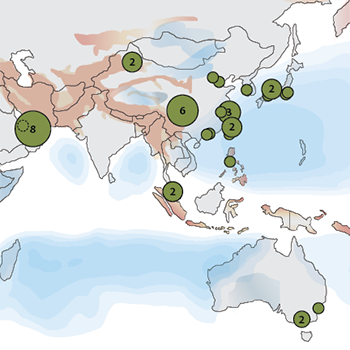Filter by
You must be a CTBUH Member to view this resource.

Princess Tower
Building
Completed
2012
Residential
Steel Over Concrete
413.4 m / 1,356 ft
101
6
763
957
13
6 m/s
171,175 m² / 1,842,512 ft²
You must be a CTBUH Member to view this resource.
You must be a CTBUH Member to view this resource.
Proposed
Construction Start
Completed
Other Consultant refers to other organizations which provided significant consultation services for a building project (e.g. wind consultants, environmental consultants, fire and life safety consultants, etc).
Material Supplier refers to organizations which supplied significant systems/materials for a building project (e.g. elevator suppliers, facade suppliers, etc).
You must be a CTBUH Member to view this resource.
Usually involved in the front end design, with a "typical" condition being that of a leadership role through either Schematic Design or Design Development, and then a monitoring role through the CD and CA phases.
The Design Engineer is usually involved in the front end design, typically taking the leadership role in the Schematic Design and Design Development, and then a monitoring role through the CD and CA phases.
The Design Engineer is usually involved in the front end design, typically taking the leadership role in the Schematic Design and Design Development, and then a monitoring role through the CD and CA phases.
The main contractor is the supervisory contractor of all construction work on a project, management of sub-contractors and vendors, etc. May be referred to as "Construction Manager," however, for consistency CTBUH uses the term "Main Contractor" exclusively.
Other Consultant refers to other organizations which provided significant consultation services for a building project (e.g. wind consultants, environmental consultants, fire and life safety consultants, etc).
Material Supplier refers to organizations which supplied significant systems/materials for a building project (e.g. elevator suppliers, facade suppliers, etc).
28 November 2018 - CTBUH Research
22 August 2018 - CTBUH Research

20 October 2018
CTBUH Research
The Middle East region is hosting its first CTBUH International Conference since 2008. In that year, there were 119 completed buildings of 150 meters or...
Princess Tower set the precedent for all-residential towers, both in Dubai and around the world. Its prime location puts it in near a number of amenities including several malls, entertainment venues, and cultural attractions. An adjacent tram connects the tower to the rest of the sprawling city. At the time of its completion in 2012, the building was the tallest all-residential tower in the world, a title that is destined to change hands rapidly in the coming years given the number of tall residential towers due for completion.
Like many of its nearby counterparts, Princess Tower is lavishly adorned in a style that reflects the region’s emerging architectural formula, with a façade that is broken up into several discernible sections. Its main body is punctuated by a series of gently bowed balconies inset into the center of each wall, while the buildings corners are lined with windows. At higher floors, the exterior pattern changes, with glass cladding broken up by crosscut vertical and horizontal panels. The crown of the tower is perhaps the building’s most remarkable feature. As the crown steps back, two series of crenellated teeth ring around a vertically striped dome that is topped with a compact spire.
The tower incorporates several strategies to manage the safety of its occupants. High-tech fire detection and suppression systems manage risks in the building, exceeding most jurisdictional requirements. To increase comfort levels, a tuned sloshing damper tank was integrated at roof level to compensate for lateral movement of the tower. Additionally, a wind-speed alarm was installed in each apartment on upper floors to warn residents of high winds prior to opening balcony doors. By combining world-class luxury and safety performance, Princess Tower set the standard for supertall residential structures.

20 October 2018
CTBUH Research
The Middle East region is hosting its first CTBUH International Conference since 2008. In that year, there were 119 completed buildings of 150 meters or...

30 July 2018
CTBUH Research
As tall buildings continue to be built in seismically-active and cyclone-prone areas, the need to augment the structures of these buildings with dynamic modification devices...

14 November 2013
CTBUH Research
Twenty years ago, the Middle East contained only one skyscraper over 150 meters in height. It is now estimated that by the end of 2015...

31 December 2012
Kevin Brass, Antony Wood & Marty Carver, CTBUH
For the first time in six years the number of tall buildings completed annually around the world declined as the effects of the global financial...
28 November 2018
CTBUH has released a Tall Buildings in Numbers (TBIN) interactive data study examining the relationship between high-rise growth and population in the Middle East.
22 August 2018
CTBUH has released a Tall Buildings in Numbers (TBIN) interactive data study on the world's tallest buildings with dampers.
13 October 2016
The Council is pleased to announce the Top Company Rankings for numerous disciplines as derived from the list of projects appearing in 100 of the World’s Tallest Buildings.
Subscribe below to receive periodic updates from CTBUH on the latest Tall Building and Urban news and CTBUH initiatives, including our monthly newsletter. Fields with a red asterisk (*) next to them are required.
View our privacy policy